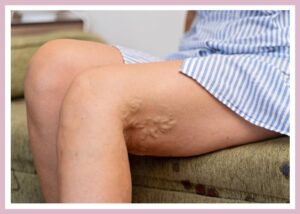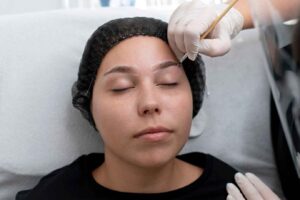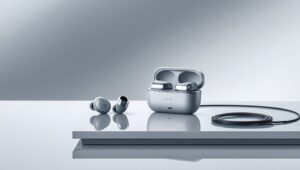Tips for a Smooth Recovery After Forehead Reduction Surgery

Forehead reduction surgery, also known as hairline lowering surgery, is a procedure designed to reduce the height of the forehead by moving the hairline down. While it can address hair loss concerns, it’s important to note that it’s not a hair loss treatment for women. If you’re experiencing hair loss, there are several effective treatments available, including medications like minoxidil. Like any surgical procedure, proper post-operative care is essential for a smooth recovery. Here are some tips to help you recover effectively and ensure the best possible results.
Follow Your Surgeon’s Instructions
Your surgeon will provide specific post-operative care instructions tailored to your individual needs. These may include guidelines on wound care, medications, and activity restrictions. It’s crucial to follow these instructions carefully to avoid complications and promote healing. If you have any questions or concerns after surgery, don’t hesitate to contact your surgeon’s office for clarification. Remember, following your doctor’s orders is an important part of a successful recovery.
Manage Pain and Discomfort
It’s normal to experience some pain and discomfort after surgery. Your surgeon will likely prescribe pain medications to help manage this. Take your medications as directed and do not hesitate to contact your surgeon if your pain becomes severe or unmanageable. Remember, good pain control can help you heal faster and get back to your normal activities sooner. Additionally, applying ice packs to the incision site can also provide some relief.
Keep the Surgical Area Clean
Maintaining cleanliness around the surgical site is essential to prevent infection. Gently clean the area with a mild antiseptic solution as directed by your surgeon. Avoid using harsh soaps or scrubbing the area, as this can cause irritation. After cleansing, pat the area dry with a sterile gauze pad to minimise the spread of any remaining bacteria. Remember, good hand hygiene is also crucial to prevent contamination during dressing changes or wound care.
Elevate Your Head
Elevating your head, especially while sleeping, can help reduce swelling. Use extra pillows to keep your head elevated at a 45-degree angle. This position helps minimise fluid buildup and promotes faster healing. Additionally, consult with a doctor to determine the cause of the swelling and discuss the best course of treatment for your specific situation. For long-term comfort, consider using a bed wedge specifically designed to maintain proper head and neck alignment.
Apply Cold Compresses
Applying cold compresses to the forehead can help reduce swelling and bruising. Use a clean, soft cloth and apply the compress for 10-15 minutes at a time, several times a day, especially during the first 48 hours after surgery. Wrap the ice pack in a thin towel to prevent skin irritation. If swelling or bruising persists, consult a healthcare professional. In addition, elevate your head when resting to further reduce swelling.
Avoid Strenuous Activities
Refrain from engaging in strenuous activities, heavy lifting, or exercise for at least two weeks after surgery. These activities can increase blood flow to the surgical area and potentially cause complications, such as bleeding or delayed healing. Listen to your body’s cues – if you feel pain or discomfort, stop the activity and consult your doctor for further guidance.
Watch for Signs of Infection
Monitor the surgical site for signs of infection, such as increased redness, swelling, warmth, or discharge. If you experience any of these symptoms, along with a fever or chills, contact your surgeon immediately. Early intervention can prevent more serious complications like deeper tissue infection or sepsis.
Stay Hydrated and Eat Nutritious Foods
Proper nutrition and hydration are vital for recovery. Drink plenty of water and eat a balanced diet rich in vitamins and minerals. Foods high in protein, vitamin C, and zinc can help support the healing process. Additionally, consider incorporating complex carbohydrates for sustained energy and healthy fats for cellular repair. Aim to choose whole, unprocessed foods whenever possible to maximise your body’s ability to rebuild and repair itself.
Avoid Smoking and Alcohol
Smoking and alcohol can impair the healing process and increase the risk of complications. Avoid smoking and consuming alcohol for at least a few weeks before and after surgery to promote optimal recovery. This will allow your body to focus its energy on repair and reduce the chances of infection or delayed healing. Additionally, talk to your doctor about a specific timeline for quitting smoking and abstaining from alcohol to best support your individual needs for a successful surgery and recovery.
Be Patient with Your Recovery
Healing after forehead reduction surgery takes time. It’s normal to experience swelling, bruising, and numbness in the forehead area. These symptoms typically subside within a few weeks, but full recovery can take several months. Be patient and give your body the time it needs to heal.
Conclusion
Recovering from forehead reduction surgery in Perth requires careful attention to your surgeon’s instructions and a commitment to self-care. By following these tips, you can help ensure a smooth recovery and achieve the best possible results from your surgery. Always communicate with your healthcare provider if you have any concerns or questions during your recovery process.
By taking these steps, you can contribute to a successful recovery journey after forehead reduction surgery. Remember, each individual’s recovery experience is unique, so it’s essential to listen to your body and seek professional advice when needed.







